Introduction
In times of financial challenges, navigating the storm requires a confident and action-oriented approach. The first critical step is to assess the current situation of your business, delving deep into its financial health and gaining insights into the underlying issues causing distress. From there, developing a new business model that responds to market needs and trends is pivotal in breathing new life into a faltering enterprise.
Creating a plan to maintain business through the crisis, securing liquidity, and managing cash flow effectively are also crucial steps. Cost management strategies, diversifying revenue streams, effective communication with stakeholders, assessing financial damage, and planning for recovery are all essential components. Lastly, long-term financial planning and sustainability ensure the longevity and fiscal health of your business.
By following these practical steps, you can steer your business back to stability and position it for future growth.
II. Assessing the Current Situation
Performing a thorough evaluation of your business's current condition is the initial crucial stage in navigating monetary challenges. By delving deep into your company's economic health, you gain essential insights into the underlying issues causing distress. This evaluation is more than a cursory glance at your balance sheet - it involves a comprehensive analysis of cash flow trends, profitability metrics, and market standing.
To begin, scrutinize every aspect of your budget, weighing current expenses and revenue streams against future objectives. This careful consideration helps avoid hasty cost-cutting measures and ensures that each monetary decision aligns with your long-term goals.
The importance of this initial step cannot be overstated. For example, a 2022 Small Enterprise Credit Survey uncovered that 42% of employee-based enterprises acquired loans to overcome economic difficulties. However, without a robust plan to generate revenue for loan repayment, this could lead to a perilous cycle of debt. Furthermore, if bankruptcy becomes the only option, comprehending the consequences of different bankruptcy categories on your enterprise is crucial, as emphasized by associate professor James Mohs.
In light of economic volatility, it's vital to evaluate operational efficiency and supply chain management, asking questions such as, 'How well did we handle disruptions?' Moreover, a comprehensive financial analysis aids in evaluating whether targets were achieved and in making informed decisions for future resource allocation.
Lastly, reviewing customer engagement and marketing effectiveness is crucial. It's crucial to comprehend the effect of your marketing approaches on your target audience and the expansion of your customer base. This comprehensive evaluation will equip you with the expertise to shift your strategies effectively and guide your organization back to stability.
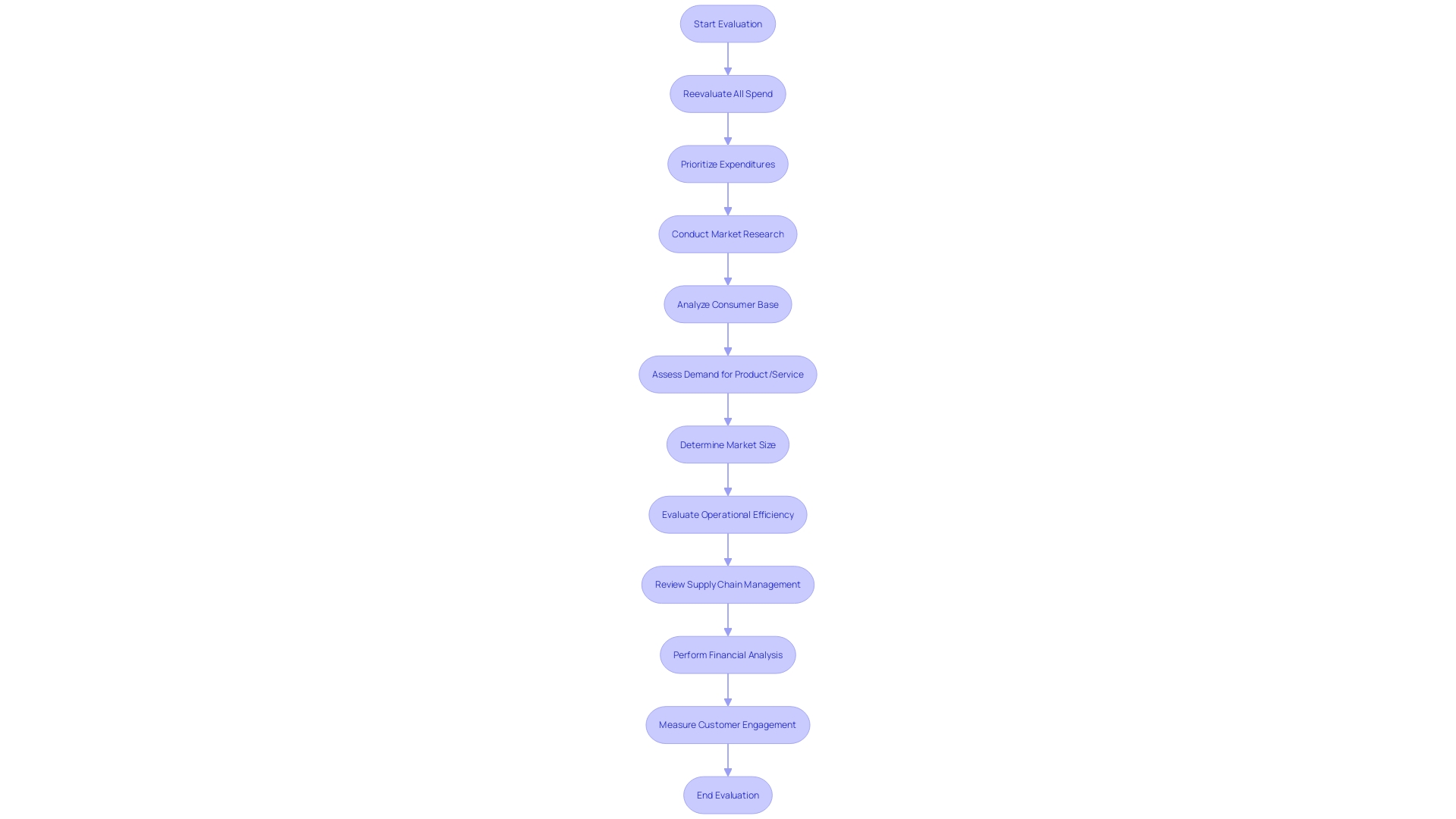
III. Developing a New Business Model
Reinventing your model is a pivotal step towards breathing new life into a faltering enterprise. It's a strategic maneuver that demands a keen understanding of your customer base, an eye for emerging market opportunities, and a refreshed value proposition. Consider the journey of Tech Ladies, which evolved from a modest meetup into a community powerhouse with over 200,000 members, ultimately leading to a significant acquisition. This transformation was driven by a clear vision and a scalable model that responded to a pressing market need.
Similarly, Semrush demonstrated adaptability by expanding its brand through strategic acquisitions, recognizing the additive value that could be unlocked through such endeavors. These examples highlight the significance of agility and foresight in today's climate, where technological advancements like AI and analytics are transforming customer engagement and operational efficiency for established retailers such as Amazon and Walmart.
To navigate this transformation successfully, it's essential to answer critical questions about customer acquisition, swift delivery of value, and leveraging trends to your advantage. As Dominic Williams of the Internet Computer points out, unlocking new potentials in enterprise solutions can be a key growth driver. Furthermore, industry 4.0 technologies such as IoT and 3D printing are transforming conventional manufacturing and distribution models, compelling enterprises to reconsider their approaches to remain competitive.
By embracing these insights and drawing inspiration from successful pivots in the commerce landscape, you can tailor a model that is not only resilient but poised for sustained success in the face of evolving market dynamics.
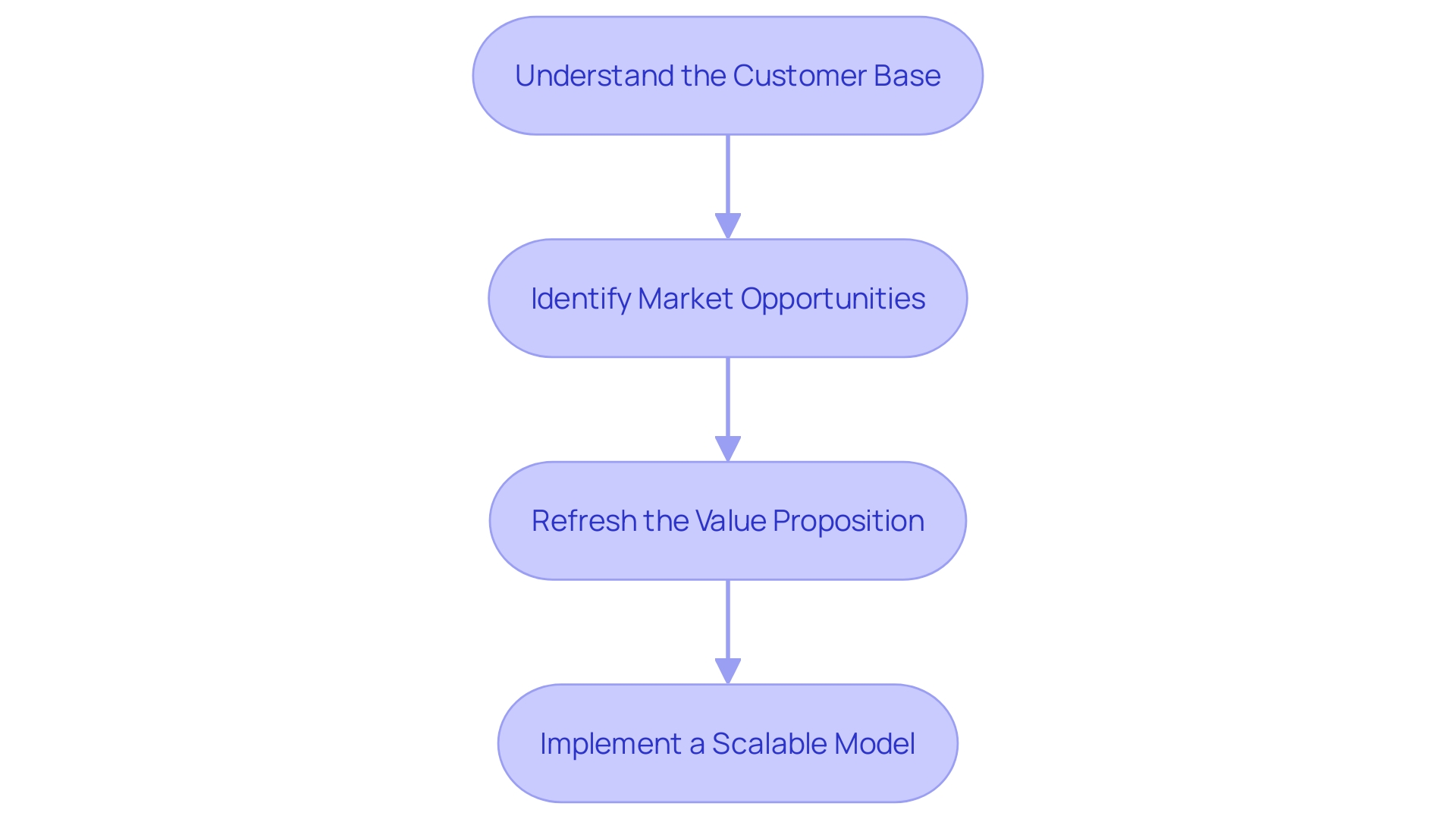
IV. Creating a Plan to Maintain Business Through Crisis
To navigate an economic crisis effectively, businesses must execute a strategic plan that targets critical operational areas. A comprehensive assessment of the firm's financial well-being is crucial, which entails a detailed examination of financial statements to pinpoint underperforming products or services. Decisions can then be made to either enhance their performance or discontinue them, thus optimizing the organization's portfolio.
Cost management is pivotal during a downturn. Rather than indiscriminate cost-cutting, businesses should conduct a comprehensive review of all expenses in relation to income streams to prioritize spending that aligns with long-term goals. This might involve divesting non-core assets to streamline operations and investing in technology that can enhance efficiency—a strategy that successful companies use to emerge stronger post-crisis.
Cash flow management must also be a top priority. Implementing forecasting tools can provide deeper insights into operational performance, helping to anticipate and navigate financial challenges proactively. This could involve renegotiating terms with suppliers or adjusting inventory levels to maintain liquidity without compromising the company's ability to serve its customers.
Moreover, workforce optimization should be approached with care. Engaging with personnel across various departments, such as HR, legal, and finance, can lead to a more resilient continuity plan that addresses the needs of the workforce while maintaining critical functions.
By learning from resilient sectors, such as food and beverage or healthcare, where demand remains consistent even in tough times, companies can adapt their strategies to maintain continuity. For instance, the consistent performance of dollar stores and fast-food chains during recessions can offer insights into consumer behavior and market opportunities. An enterprise's ability to pivot, such as a vending machine venture moving to a higher traffic area, showcases the importance of flexibility in operations.
Essentially, a proactive and well-thought-out approach to managing a crisis can not only preserve an organization but also position it for future growth once economic stability returns.
V. Securing Liquidity and Managing Cash Flow
When navigating financial crises, securing liquidity and managing cash flow effectively are paramount. Strategies that can be pivotal include seeking pre-revenue funding to fuel product development and market entry, which is essential for startups yet to generate sales. Harnessing a variety of funding sources, such as bank loans, SBA loans, or online lenders, requires a solid plan and organized financials to convince lenders of your enterprise's viability.
Navigating the funding landscape requires an understanding of the stages of pre-revenue companies, from the idea phase to the development stage, and aligning your funding strategies accordingly. For established enterprises, diversifying income streams, like utilizing a physical store to vend products on the internet, can enhance cash flow. Furthermore, investing in dividend stocks or operating a landscaping enterprise can offer chances for passive income and cash flow improvement.
To optimize cash flow management, regularly reassessing and refining your competitive advantage is crucial. This requires a profound comprehension of your company's performance through comprehensive evaluations of monetary statements. As noted by Dr. Sharon H. Porter, 'Know your numbers!' is key to future success. Furthermore, sustaining low fixed expenses and having adaptable cost structures that adapt with revenue can protect your company's financial health.
In the wider context of corporate planning, the pursuit of value should direct decision-making rather than the pursuit of profit. This principle underpins investment choices, financing mixes, and shareholder returns. Companies with growth potential may sacrifice short-term profits for long-term value, a strategy increasingly scrutinized in modern industry models. With this approach, maintaining sustainable operations without constant capital infusions is a hallmark of truly successful unicorns among startups.
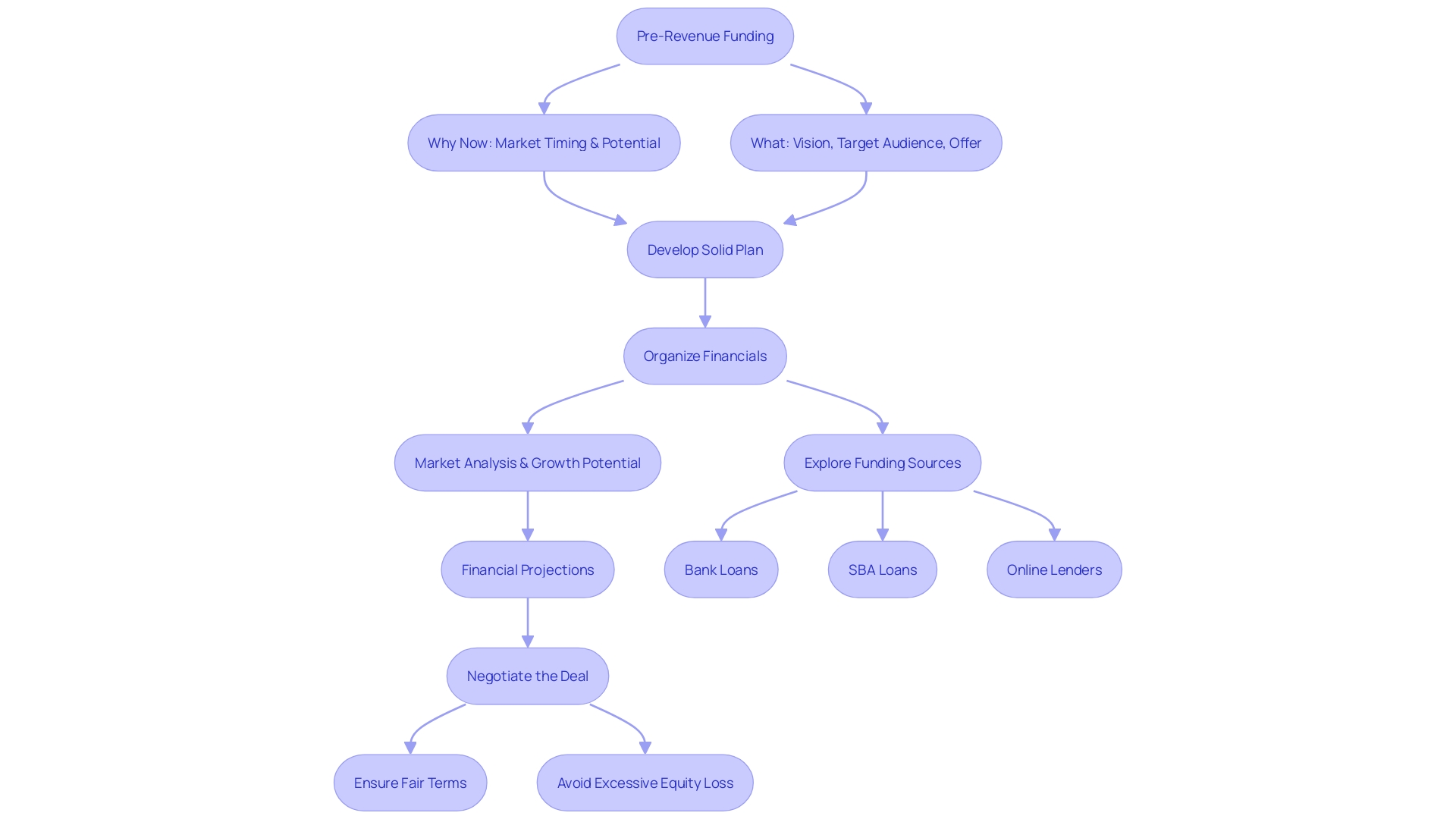
VI. Cost Management Strategies
Attaining stability and expansion for your enterprise often necessitates a perceptive examination of cost control. To start, reevaluate your entire budget, examining income sources and dissecting expenses into fixed and variable categories. This comprehensive financial performance analysis is the first step in understanding your business’s fiscal health and preparing for future planning and resource allocation.
Next, consider the effectiveness of your operational efficiency and supply chain management. Challenges in these areas can significantly impact your bottom line, as evidenced by companies like Lex Machina. They encountered significant database management challenges as a result of expansion and increased intricacy in their operations, indicating the requirement for more efficient processes and modernized management approaches.
Innovation in cost management is not only a metric related to money, but also a strategic imperative. Tom Gilb's 'Planguage' offers a multi-dimensional approach to avoid faulty estimates and project failures. Implementing innovative approaches can lead to transformative change beyond mere cost savings, as demonstrated by ERA Group’s thirty-year history of pioneering in corporate planning and cost optimization.
Furthermore, marketing and customer engagement require scrutiny. Analyze the return on investment for different marketing channels and the growth of your customer base. This important assessment will aid in aligning your marketing approaches with your monetary objectives effectively.
Lastly, don't overlook the insights from your workforce. AT&T’s experience, where employee feedback prompted a reevaluation of long-standing systems, underscores the value of engaging with your team to identify inefficiencies and foster innovation.
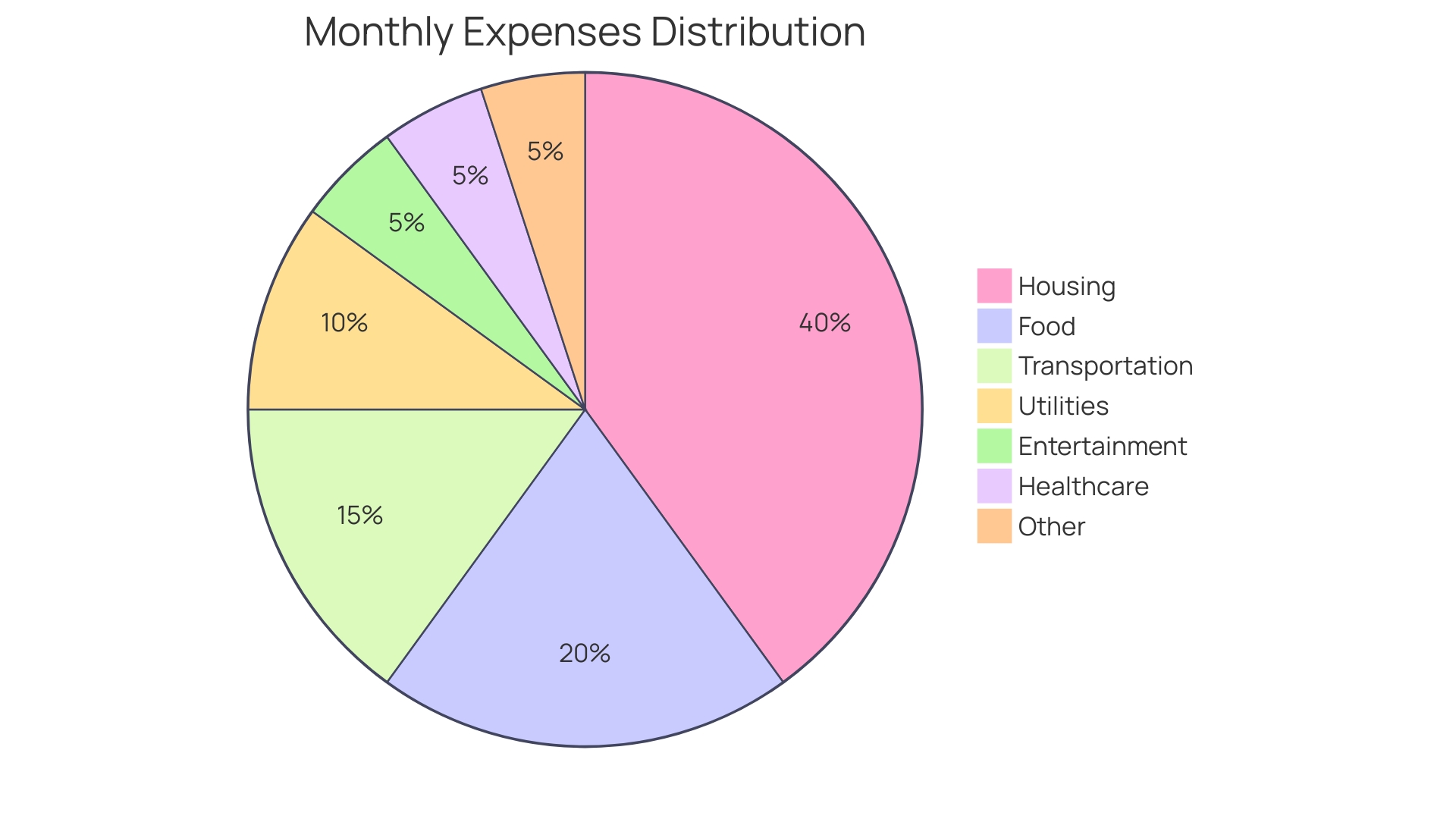
VII. Diversifying Revenue Streams
Exploring different avenues to diversify revenue streams can safeguard your business against crises. Entering into fresh markets, introducing creative products or services, and utilizing the potential of digital platforms are all approaches that can improve the financial strength of your organization. Chess.com is a prime example of this approach, growing its user base to over 150 million by focusing on the digital space, which allowed it to connect chess enthusiasts globally. Similarly, industries with cyclical revenue patterns, such as construction and oil, must meticulously plan for economic downturns by bolstering their cash reserves. On the other hand, companies in stable markets can capitalize on consistent revenue flows.
To further diversify, consider passive income avenues like Real Estate Investment Trusts (REITs) that offer shares in commercial real estate earnings or intellectual property monetization, which can yield long-term benefits. Adopting a circular model and incorporating Environmental, Social, and Governance (ESG) approaches can also appeal to environmentally aware consumers, as highlighted by the World Economic Forum. Finally, investing in the most profitable industries for the current year, like accounting and legal services, can drive profitability.
Leadership plays a crucial role in embedding resilience into organizational practices. As suggested by Sternfels, appointing a senior leader to oversee resilience efforts can ensure a top-down approach to navigating disruptions. In the end, businesses should focus on value maximization, which may involve sacrificing short-term profits for long-term growth, a strategy that could be particularly relevant for social media, tech, and green energy sectors. Remember, the aim is not just to be profitable, but to create enduring value for the company and its stakeholders.
VIII. Effective Communication with Stakeholders
When charting a course through financial recovery, clear, open communication with your stakeholders is not just beneficial—it's imperative. To establish a strong base for a turnaround, it's crucial to involve employees, customers, suppliers, and investors by giving them honest updates on your company's revival strategies. Showing transparency and establishing trust with these key groups promotes a collaborative environment conducive to your company's resurgence.
For instance, when TBC Bank in Georgia embarked on enhancing its digital product delivery, they understood the significance of keeping stakeholders looped in on their progress, thereby nurturing trust and support. Similarly, as the Federal Reserve successfully curbed inflation with strategic rate hikes, they communicated their actions transparently, maintaining market confidence.
It's crucial to consider the insights from Lillian Gregory of The 4D Unicorn LLC, who emphasizes the reputational risks of phrases like "no comment" or "unforeseen circumstances" which can appear evasive in times of crisis. Instead, adopt a response framework that evaluates the relevance and impact of the issue at hand, ensuring your communications are seen as thoughtful and responsible.
Moreover, in the present environment where investors prioritize technological advancement and innovation as indicated by the majority (59%) who consider it influential for the future, it is evident that stakeholders value being updated about a company's forward-thinking initiatives. This helps to maintain their trust and potentially secure their support during crucial transitions.
Remember, it's not just about sharing information; it's about fostering a sense of community with your stakeholders. They're not just observers; they're partners in your company's voyage to economic wellness. By involving them with openness and courtesy, you're more likely to gather their support and collaboration towards the success of your organization.
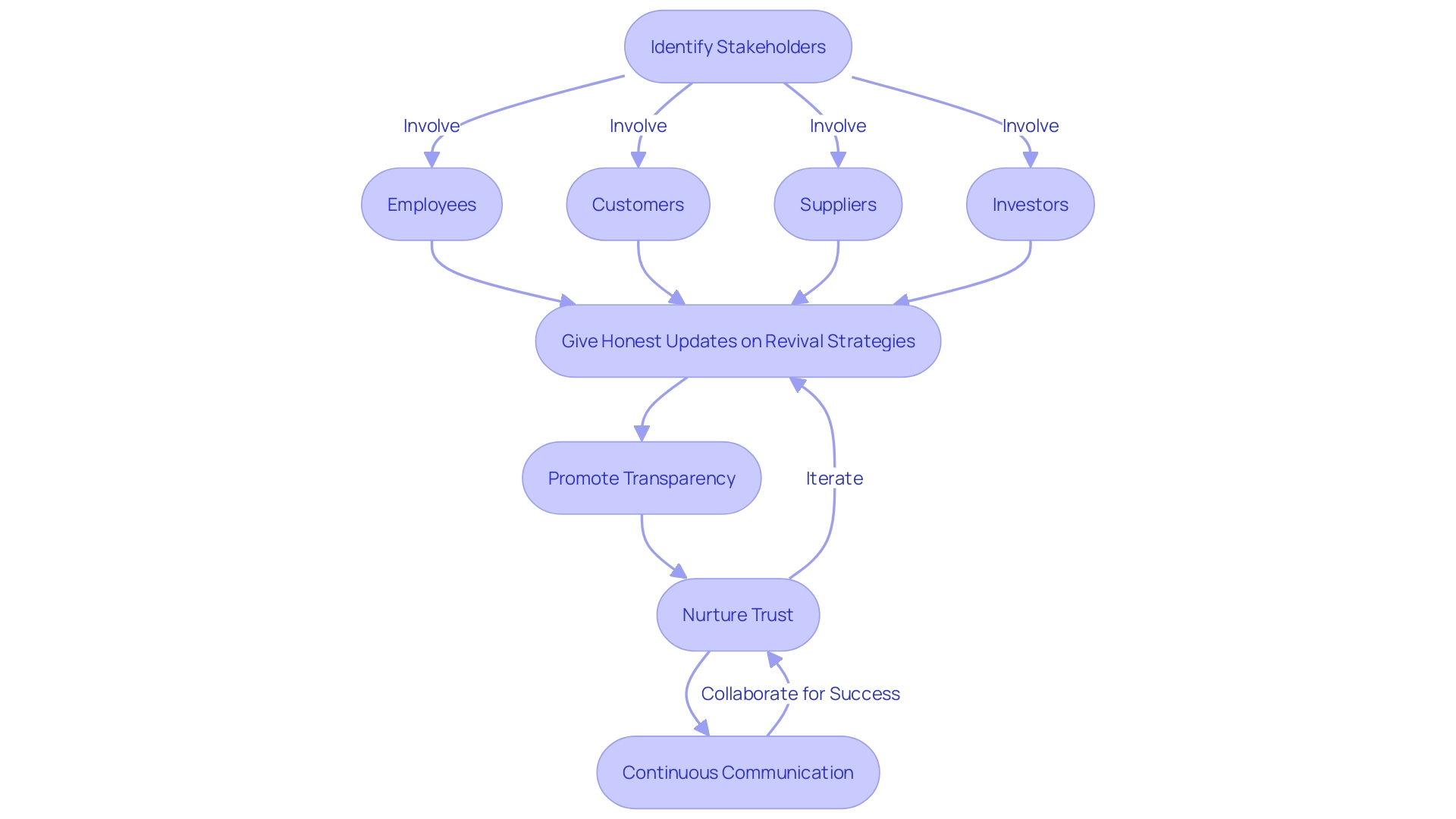
IX. Assessing Financial Damage and Planning for Recovery
To successfully navigate through an economic downturn and lay the groundwork for revival, it is crucial to conduct a comprehensive examination of the impacted aspects of your organization. The process should start with a risk assessment and business impact analysis that aligns with organizational goals. It's a multi-disciplinary endeavor, requiring input from various departments including human resources, legal, facilities, IT, security, and finance. A comprehensive Business Continuity Management (BCM) program should take into consideration the effects on personnel, infrastructure, legal commitments, economic stability, brand reputation, community, and environmental responsibilities.
The creation of a recovery plan is not a one-off event; it's an ongoing process that involves the regular monitoring, reviewing, and updating of the plan to ensure it remains effective. This dynamic approach should also account for the maximum acceptable downtime after an incident and establish clear communication channels with employees, stakeholders, and the media.
Moreover, recent economic challenges have emphasized the significance of monetary resilience. Information from the Business Insights and Conditions Survey shows that during the previous year, trade activities have varied, with 16% of enterprises witnessing a rise in exports while 24% observed a decline. Similarly, 13% reported an increase in imports compared to 18% who imported less. These trends highlight the necessity for a proactive approach to financial management during crises.
Incorporating technology can also play a pivotal role in delivering better value and enhancing operational resilience. As noted by security experts, organizations are increasingly expected to deliver comprehensive coverage and service excellence, which can be achieved through the judicious use of technology.
By engaging with stakeholders and determining what is considered high and low risk for your organization, you can formulate a risk management plan that is tailored to your specific needs and conditions. This proactive approach can significantly reduce the likelihood of negative impacts on your enterprise, ensuring a safer work environment and a more robust recovery strategy.
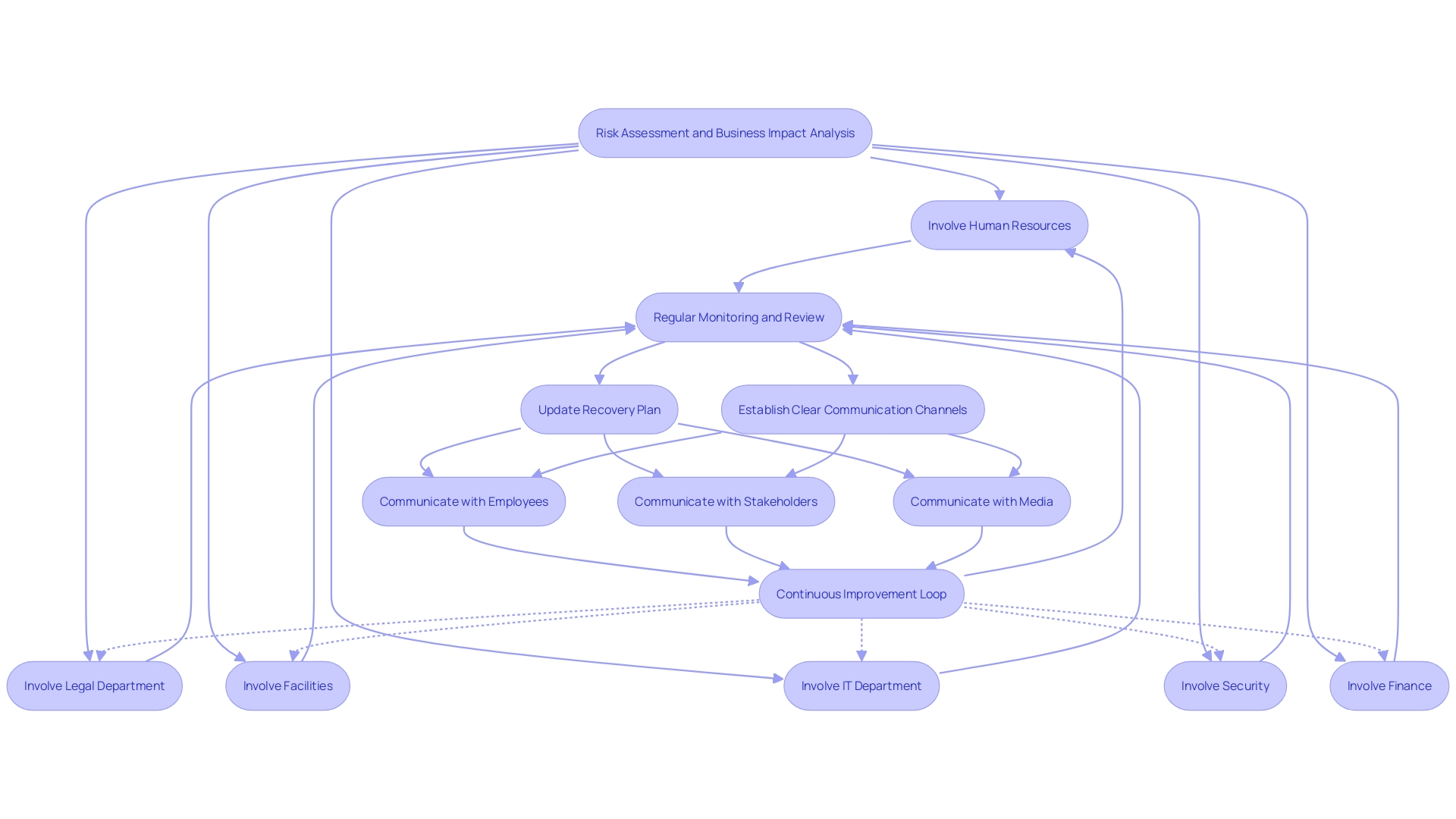
X. Long-Term Financial Planning and Sustainability
For companies aiming to guarantee long-term sustainability and fiscal well-being, the incorporation of strategic fiscal planning is crucial. This approach involves a careful compilation of historical data, such as sales records, expense reports, and statements. Examining a minimum of three years of such data is optimal, as it aids in capturing not only the cyclical nature of commerce but also broader patterns and anomalies that may impact future performance. Critical data points to consider include revenue, operating costs, profit margins, losses, liabilities, investments, and fixed costs. With this foundation, companies can set realistic milestones and objectives to achieve their long-term financial targets, thus ensuring stable growth and sustainability.
Drawing inspiration from family-owned enterprises that have withstood different economic challenges, it's apparent that these entities have perfected the art of resilience. Family-owned enterprises play a crucial role in the global economy, contributing to over 70 percent of the global GDP and playing a key part in employment, generating between $60 trillion and $70 trillion in turnover annually. These enterprises, such as Levi Strauss and L'oreal, have flourished for centuries and are outstanding in establishing and achieving long-term objectives, including sustainability and community development.
Moreover, companies like Stora Enso have demonstrated adaptability by pivoting towards renewable materials in response to market trends, thereby ensuring their relevance and profitability. Stora Enso's shift, which included redefining its product line and reducing its workforce to enhance profitability, underscores the significance of agility in organizational strategy.
From the corporate finance perspective, businesses are encouraged to focus on value maximization over profit maximization. This principle should guide investment decisions, financing mixes, and the extent of returns to shareholders. An understanding that for some companies, especially more established ones, value and profit maximization may align, but for others, particularly those with growth potential, short-term profit sacrifices might be necessary to bolster future growth prospects.
Lastly, the current economic climate, as indicated by the Federal Reserve's interest rate hikes, shows the significance of planning in navigating inflation and avoiding recessions. German enterprises, for example, are increasingly giving priority to sustainability, with over half considering it a significant factor, driven by customer demands, social responsibility, and legal regulations. This focus on sustainability is not just a trend but a strategic move that can lead to cost reductions and improved operations.
In conclusion, establishing a robust financial plan, setting attainable goals, and keeping a vigilant eye on key financial metrics can empower businesses to forge a path toward sustainable growth and economic resilience.
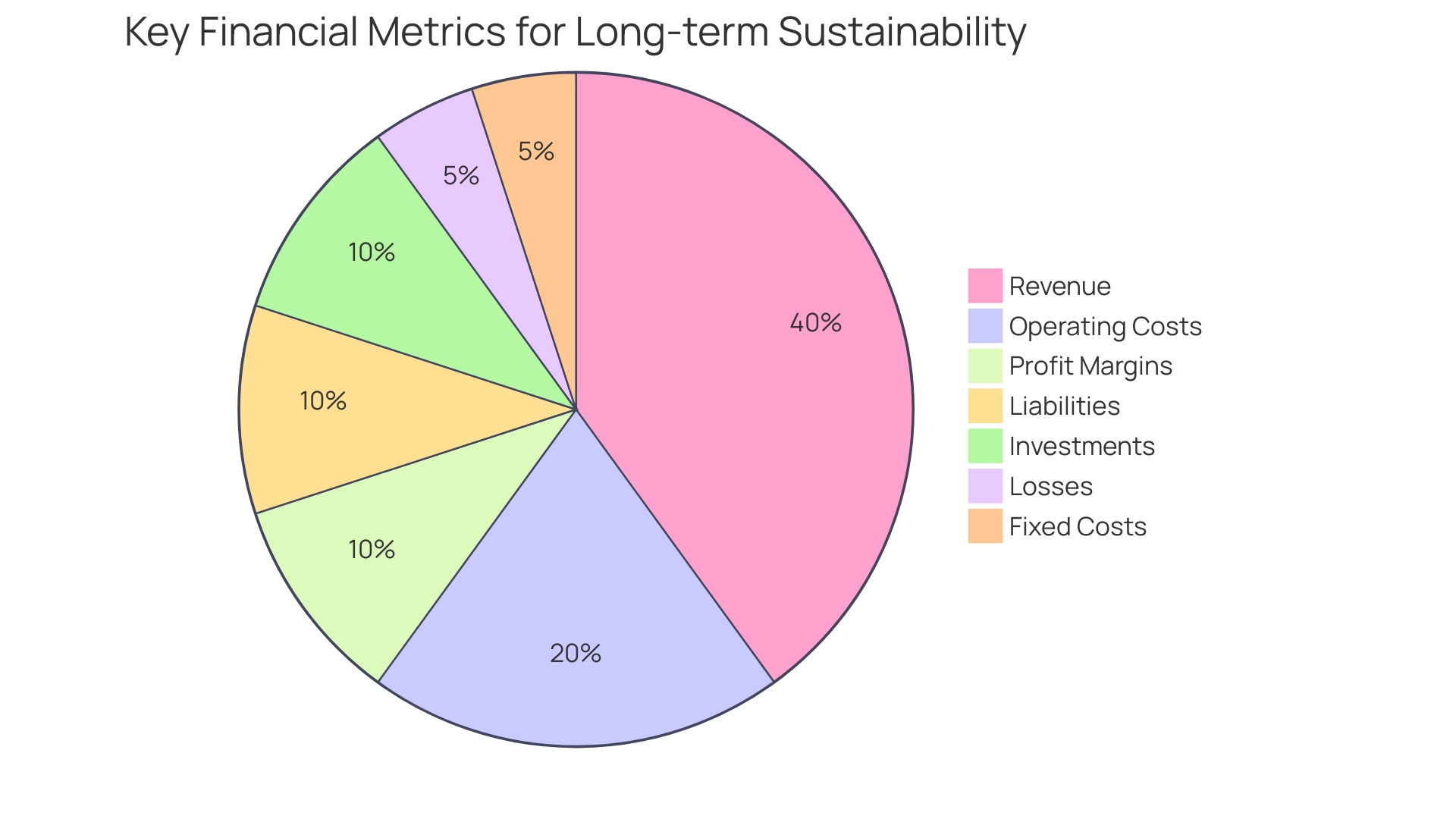
Conclusion
In times of financial challenges, businesses must take a confident and action-oriented approach. Key steps to navigate the storm include assessing the current situation, developing a new business model, creating a plan to maintain business, securing liquidity, managing cash flow, implementing cost management strategies, diversifying revenue streams, effectively communicating with stakeholders, assessing financial damage, and planning for recovery.
By delving deep into their financial health, businesses can gain insights into underlying issues causing distress. Developing a new business model that responds to market needs is crucial for breathing new life into a faltering enterprise. Creating a plan to maintain business involves optimizing portfolios, managing costs, and prioritizing cash flow.
Securing liquidity and managing cash flow effectively are paramount during financial crises.
Cost management strategies help optimize budgets, improve efficiency, and analyze marketing effectiveness. Diversifying revenue streams through market expansion and innovation safeguards against financial crises. Effective communication with stakeholders builds trust and collaboration.
Assessing financial damage and planning for recovery involves conducting a risk assessment, creating a recovery plan, and leveraging technology for resilience.
Long-term financial planning and sustainability require analyzing data, setting milestones, and prioritizing value maximization. By following these steps, businesses can navigate challenges, achieve stability, and position themselves for future growth. Proactive measures, adaptability, and resilience are crucial for ensuring longevity and fiscal health.




